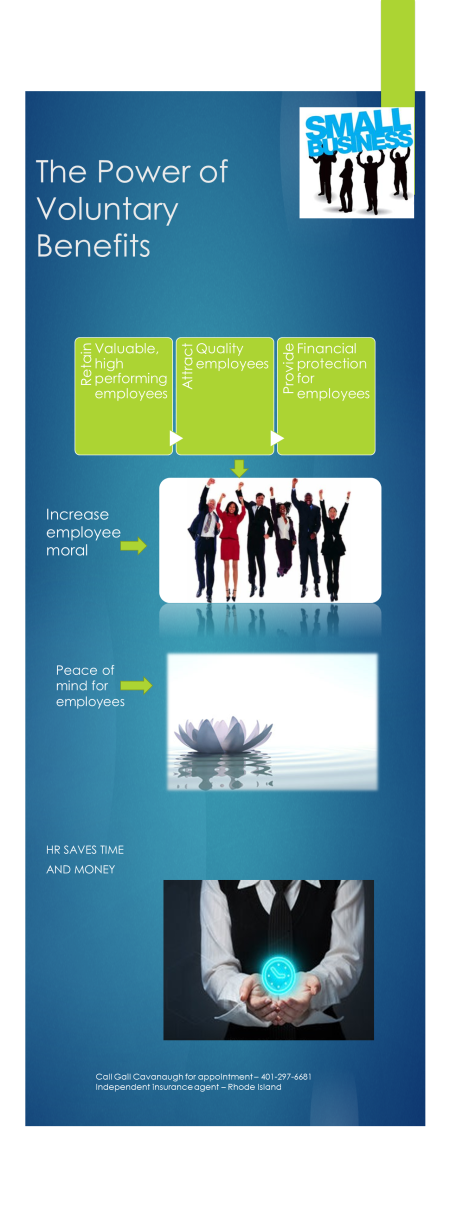 This chapter is an excerpt from my new e-Book, Retailers’ Guide to Merchant Services and can be obtained at Gelise 1’s Storefront.
This chapter is an excerpt from my new e-Book, Retailers’ Guide to Merchant Services and can be obtained at Gelise 1’s Storefront.
Chapter 1 Making a Decision to Accept Credit Cards Start-up business owners have to make many decisions about their cash flow and if they are not currently accepting credit cards, this may not be a priority when all seems to be running well. After all, people are coming into the store and paying in cash. Once in awhile, someone asks if you accept credit cards and the answer is “No.” If the customers really wants the product and has the cash, they just pay in cash. However, if the person does not have the cash, the business owner loses out on a sale.
But, this does not seem to matter, as most of the patrons come in with cash. The business owner may even direct the customer to the nearest ATM machine, at which time, the customer returns with the cash and pays for the merchandise.
Money in the Competitor’s Pocket But, what is really happening here? When the owner directs the customer to the nearest ATM machine, he pays for the use of the machine and the owner of the other business receives a fee for the transaction.
What about that customer who desperately needs or wants your product so badly and prefers to pay with a credit card? He leaves and finds another business which sells the same product, but accepts credit cards. Because he has found the product and payment terms he wants, he opts to become a regular customer. Let’s say you own a restaurant and the customer likes to go out to eat dinner with his wife once a week.
Your average dinner is $15.00. That computes to a loss of $60.00 a month or $720.00 per year. This does not seem to be much of a loss for your company on a yearly basis, but what if you turned down five customers per day and they all found another restaurant as the first customer did?
Calculating the Loss
You are open six days per week, so you turn down 30 customers per week. That’s 120 customers per month at $15.00 each which computes to $180 per month. At this rate, the annual loss would be $21,600! What could you do with another $21, 600?
If you are cost conscious, you cannot afford to let this continue. Your competition is earning another $21,600 per year because you will not accept credit cards! If you are profit motivated, you will think about your losses in this way. Could you ever imagine that letting people walk out of your establishment because they are unable to pay in cash could lead to losses of this magnitude?
Let’s imagine what could happen when a customer leaves your establishment to cash an ATM card. He goes next door to cash the ATM card. It costs the customer an average of $3.00 per transaction to use the ATM machine which is the business owner’s profit. If the customer is desperate for your product, they will use the ATM machine.
However, they may decide that $3.00 is too high to pay for acquiring cash out of a machine and leave the store looking for another store which sells the same product and accepts credit cards. If the business owner receives $1.00 for every customer who uses the machine and you send him five customers, he makes five dollars a day. If you are open six days a week, he makes $30.00 a week or $120 a month. After one year, he makes $1440.00, all because you are not equipped to accept credit cards. So now, you are losing $21, 600 + 1440.00 = $23,040. I ask you again, what would you do with an extra $23,040 per year?
Studies have shown that people spend an average of 12 – 18% more when they pay with a credit card. The owner must be prepared to accept the credit cards when customers present them for payment. If you were the owner of a restaurant and a customer came in to use a credit card, you would have to turn the customer away if you did not accept credit cards. Suppose the customer ordered a meal and paid cash for it. If he enjoyed the meal he may decide he wants to share it with friends who are coming to visit on the weekend. However, since he prefers to pay for large orders with a credit card, he decides to plan a catered event at his house.
Let’s suppose that the charge for a catered event is $500.00. You miss out on an additional $500.00 in profits. You may not feel that losing $500.00 a year amounts to much and you could make it up on other sales, but suppose one customer per month wants to pay for a catered event by credit card. Because you do not accept credit cards, you turn the customer away and end up missing out on $6000.00 per year.
This loss could amount to more during the holidays. If you add the $6000.00 to the previous losses, it totals $29,040, all because you do not accept credit cards. What could you do with an extra $29, 040 per year? Sooner or later the business owner is going to resign himself to the fact that if he accepts credit cards at his business, he will make more money. How many years are you going to wait until you decide to purchase a credit card terminal? If you wait one year, you lose $29,040. If you wait two years, you lose $58,080. If you wait three years, you lose $87,120. What could you do with an extra $87,120?
Despite itemizing these losses, some business owners will not be impressed. In their own mind, handling credit cards is just another burden. Having to learn how to make transactions on the credit card terminal, learning the record keeping and watching out for fraud are very time consuming duties. The business owner would have to learn new terminology, keep abreast of the compliance issues, and work to avoid charge backs. These are added responsibilities for which he has to set aside time to perform these tasks. In some cases, the business owner is already overwhelmed with the day to day operation of the business.
ow will the business owner fit this into his schedule? Will the representative be there to assist in the areas where he needs help? What if he cannot get in touch with the representative? These are all valid questions and the owner should not proceed with ordering a credit card terminal unless these questions are answered. Is the extra time spent on learning about credit card transactions worth the $29,040 saved?
Let’s answer these questions one by one. The first question, is one of time management. The owner is going to have to examine his schedule very closely and see when he will have extra time to devote to learning all about accepting credit cards. He may have to delegate some of his duties to his employees in order to free up some time. 
There is much to learn, including the operation of the credit card terminal, how to batch out, recognizing fraud, and when and how to call credit card numbers into the credit card companies. Then he has to review and become familiar with the compliance issues. A good representative will assist the new business owner in learning everything that he needs to know. He will answer questions, make himself available when necessary, and provide a telephone number where he can be reached. The representative should be able to answer most of the questions. In order to retain the customer and receive referrals, the representative should ensure that this process is as efficient for the owner as possible. In the event that the representative is not available, there should be a technical support department which will assist the business owner and answer any questions he might have.
Most credit card processing companies have a technical support department available twenty four hours a day seven days a week, including holidays. Most questions and problems with the terminals can be handled over the telephone. Your patrons will take you more seriously when you install a credit card machine. Your current customers will go out and tell their friends that you accept credit cards and then they, in turn, will tell their friends. Advertisers say that the best advertising for a business is word of mouth.
The ones who pay in cash now, will probably continue paying in cash. But now, you will gain new customers who prefer to pay in credit cards. Customers prefer to have a choice in payment methods and studies have shown that you will retain your customers when they have a choice. Credit card terminals also accept debit cards which are a safer transaction for the consumer. Debit cards require the use of a PIN number which only the owner of the debit card has. In order to use the debit card, the owner must enter his PIN number into the machine. The business owner incurs a charge for the debit card which is below the rate for the lowest priced credit card, the qualified VISA or Master Card. The savings in processing debit cards is around sixty percent. This means that the fee to process debit cards is about sixty percent lower than the qualified rate.
In order to process the debit cards, the owner must purchase a PIN pad in which the consumer enters his/her PIN number. If the owner does not purchase a PIN pad or ask the consumer to enter his/her PIN number, then the fee for the transaction is at the check card rate which is a about double the rate for processing a debit card. Because of the savings involved, some business owners choose only to process debit cards. Debit cards have become very popular as many people carry them in lieu of cash. When people use the debit card, they have the option of receiving cash back from the purchase. This means they can receive an amount over and above the amount of change they would receive from the transaction. The maximum amount is determined by the owner.
Receiving cash back is another very attractive benefit for the consumer to use his debit card instead of a credit card as he would not be able to receive cash back from a credit card. Now the customer has a choice of using cash, check, credit card or debit card. What do you gain by turning down a customer? Studies have shown that a customer is more likely to recount a bad experience rather than a good one. When he relates the experience, people tend to believe the story-teller and boycott the place rather than investigate on their own. You may still continue doing business, but your business will not grow as much as it would have, if you were accepting credit cards.
Some business owners do not believe in credit cards for the social reasons of how customers misuse them. While this may be a valid point, most people are responsible in handling their credit cards. We are living in the “Age of Plastic” and people are able to purchase things that they normally would not purchase because they possess a credit card. Credit cards make it possible for people to have businesses and make more profits than they normally would have if they did not accept credit cards. When the merchant accepts the payment by credit cards, he receives cash in his business checking account within three to five days. As long as the credit card machine accepts the credit card, the merchant is guaranteed to receive the money.
People are responsible for their own credit cards and how they use them. Your decision to accept credit cards will not contribute to the customer’s lack of responsibility in controlling his expenses. This is an issue that the customer must address. It is not the business owner’s responsibility to ensure that the customer does not over spend or abuse his credit card privileges.
Just as the owner must be responsible in learning enough about the credit card processing industry in order to process credit cards, so the customer must be responsible in learning how to manage his debt. The customer, as an owner of a credit card, has certain responsibilities that he must undertake and he/she must make a conscious decision to accept the responsibilities.
© Gail Cavanaugh and The Merchant’s Guide to Credit Card Processing, 2008.
Unauthorized use and/or duplication of this material without express and written permission from this blog’s author and/or owner is strictly prohibited.
Excerpts and links may be used, provided that full and clear credit is given to Gail Cavanaugh and The Merchant’s Guide to Credit Card Processing with appropriate and specific direction to the original content. 
To order the e-Book “Retailer’s Guide to Merchant Services – From Storefront to Internet,”
Subscribe to RSS headline updates from:
Powered by FeedBurner
If you would like to be on my e-mail list, please complete the form below and include your e-mail address. All information is kept confidential. I would be interested in knowing what percentage of increase in sales that you experienced the year after you started accepting credit cards. <a Gail Cavanaugh’s Business Solutions consults with businesses and is a provider of merchant services and equipment for businesses. If you would like to know more about the services, please complete the contact form with your questions. To subscribe to this blog, click onto “Subscribe in a reader” above.
APSense – Get Paid While Promoting Your Business! Check Out: http://www.apsense.com/invite/gelise1 Comments: Name: Business blog Website: http://www.in-business.org.uk This is a good article that any business not already taking credit cards should read and especially in the present economic climate. In the UK for example, for a long time Marks & Spencer refused to take credit cards, so customers could only pay by cash or cheque, until eventually they started to loose customers to their competitors and in the end they had to bow to the pressure and ended up taking credit cards.
|
Name: Jamwes Website: http://tim-jim.blogspot.com/ Very good information. Thank you.
Name: Chuck Bartok Website: http://www.chuckbartok.com Gail, Very Informative Blog site. Yes merchants can benefit from a well manged Credit Card Processing System. Also another advantage is the Judicious use of the “loans” available to Strong accounts. But like all Credit, it must be managed well.


 Jogena’s – eBook and eZine Directories – Get Listed Today! eLibrary – Open Ebooks Directory – includes most of the ebooks
Jogena’s – eBook and eZine Directories – Get Listed Today! eLibrary – Open Ebooks Directory – includes most of the ebooks 
 blog directory
blog directory
var category_id=21;var toplist_id=””;
var gscqForm;(function(d,t){var s=d.createElement(t),options={‘formKey’:’rq-WjS0AI%3AVneRmTa6I%3A0A.mnJnJsfnJ4lzk’,’async’:true};s.src=’//www.gigsalad.com/js/quote_widget.min.js’;s.onload=s.onreadystatechange=function(){var rs=this.readyState;if(rs)if(rs!=’complete’)if(rs!=’loaded’)return;try{gscqForm=new GsContactForm();gscqForm.initialize(options);gscqForm.display();}catch(e){}};var scr=d.getElementsByTagName(t)[0],par=scr.parentNode;par.insertBefore(s,scr);})(document,’script’);
Reach more customers with the best web directory for free where you can find more resources about Financial Services Directory






 Posted by gailcav
Posted by gailcav 















